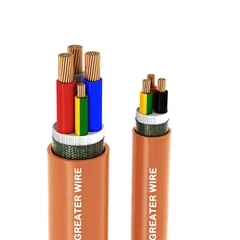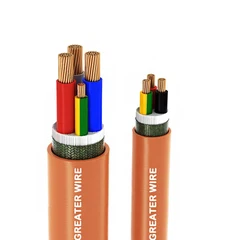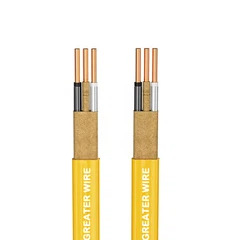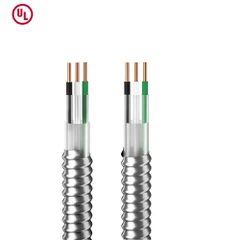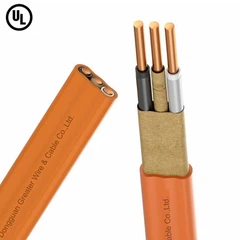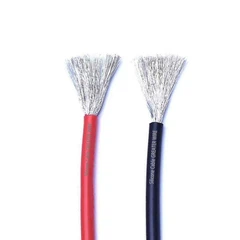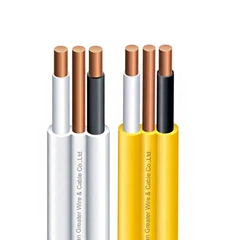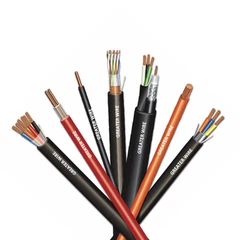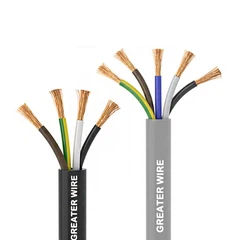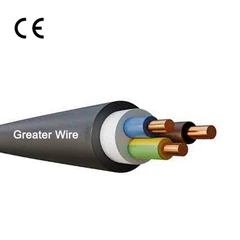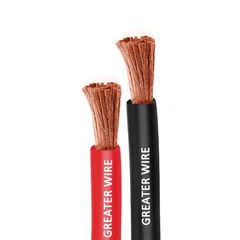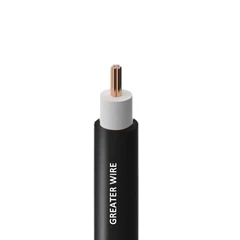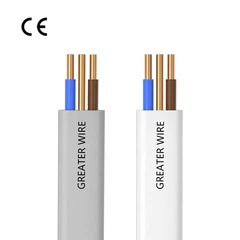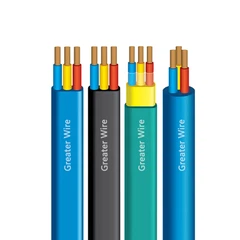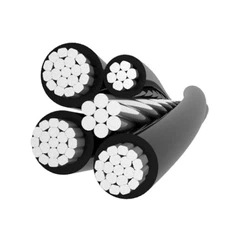Electrical cables play a vital role in transmitting power safely and efficiently. Selecting the wrong type of cable can lead to reduced lifespan, safety hazards, or non-compliance with national electrical codes (NEC).
UF-B and THWN cables are widely used, but they have distinct structures, properties, and applications. This guide will break down the differences and help you understand which cable is ideal for your needs.
Basic Concepts
UF-B Cable
- Definition: UF-B stands for Underground Feeder Cable, designed for direct burial and outdoor installations.
- Applications: Suitable for residential outdoor wiring, underground feeders, and garden or landscape lighting.
- Structure: Solid PVC insulation with a tough outer sheath that is moisture-resistant and UV-protected.
THWN Cable
- Definition: THWN stands for Thermoplastic Heat and Water-resistant Nylon-coated wire.
- Applications: Typically installed in conduits, wet or damp environments, and industrial settings.
- Structure: Thermoplastic insulation with a nylon coating, offering flexibility, heat resistance, and moisture protection.
Technical Characteristics Comparison
The following table provides a clear side-by-side comparison of UF-B and THWN cables:
| Feature | UF-B Cable | THWN Cable |
|---|---|---|
| Insulation | Solid PVC | Thermoplastic with Nylon coating |
| Temperature Rating | 90°C dry, 75°C wet | 90°C dry/wet |
| Voltage Rating | 600V | 600V or higher |
| Installation | Direct burial, outdoor | Conduit, wet locations, industrial settings |
| Mechanical Strength | High, UV-resistant | Flexible, suitable for bending |
| Durability | Excellent for underground | Excellent for wet/damp environments |

Application Scenarios
Outdoor and Underground Installations
- UF-B: Ideal for direct burial or outdoor wiring without conduit.
- THWN: Typically requires conduit for protection when used outdoors.
Indoor and Industrial Environments
- THWN: Suited for industrial pipelines, wet locations, and areas requiring frequent bends.
- UF-B: Limited indoor use, mainly in areas not exposed to mechanical stress.
Safety and Code Compliance
- Both cables meet NEC standards, but UF-B is preferred for direct burial, while THWN is required for conduit installations in damp or wet conditions.
Advantages and Disadvantages
| Cable Type | Advantages | Disadvantages |
|---|---|---|
| UF-B | Direct burial, UV-resistant, simple installation | Less flexible, limited industrial applications |
| THWN | Flexible, heat/water-resistant, wide range of applications | Requires conduit, higher cost |
Choosing the Right Cable
When selecting between UF-B and THWN, consider the following factors:
Installation Environment:
- Underground direct burial → UF-B
- Conduit, wet locations, industrial environments → THWN
Electrical Load:
- Voltage, current, and length of the run should match the cable specifications.
Durability and Maintenance:
- UF-B is ideal for low-maintenance outdoor setups.
- THWN offers superior flexibility for complex installations.

Our Solution
In summary, UF-B and THWN cables serve different purposes. UF-B excels in direct burial and outdoor applications, while THWN is ideal for conduit installations in wet or industrial environments. By understanding these differences, you can ensure safety, efficiency, and compliance with electrical standards.
At Dongguan Greater Wire & Cable Co., Ltd., we specialize in high-quality UF-B wires, providing reliable solutions for projects of any size. Our UF-B wires are durable, UV-resistant, and engineered for long-term performance in outdoor and underground applications.
We offer:
Full technical support and consultation
Professional pre-sales and after-sales services
Customized solutions for both small and large projects
For inquiries or purchases, contact us today:
Tel/WhatsApp/WeChat: +86 135 1078 4550 / +86 136 6257 9592
Email: manager01@greaterwire.com
Choose Greater Wire & Cable for safety, reliability, and expert support in all your electrical wiring projects.

